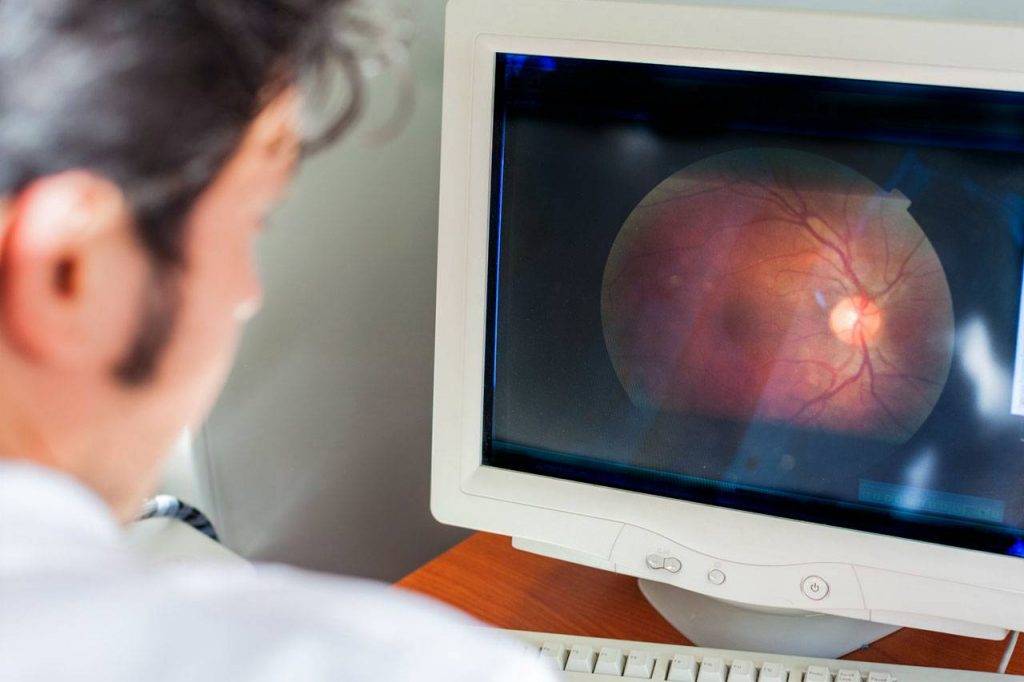Over 50% of people with ocular hypertension are unaware that they have this sight-threatening eye condition.
Ocular hypertension is a serious condition that occurs when the pressure within your eye rises above normal limits.
High eye pressure can lead to eye conditions, such as tunnel vision and glaucoma — and permanent vision loss, if left untreated.
Unfortunately, ocular hypertension does not usually present with any noticeable symptoms or vision changes, so many people are unaware that they even have it.
Regular eye exams facilitate early detection and treatment of ocular hypertension, thus preventing damage to the optic nerve and permanent vision loss.
What is considered high eye pressure?
A diagnosis of ocular hypertension is made when the pressure within the eye, also called the intraocular pressure (IOP), is higher than normal.
High eye pressure is defined when the pressure is greater than 21 mm Hg.
Normal eye pressure ranges from 10-21 mm Hg (millimeters of mercury), depending on the time of day, though it is usually highest in the morning.
Is ocular hypertension serious?
Yes.
Ocular hypertension is the most frequent cause of permanent optic nerve damage.
Ocular hypertension is directly linked to an increased risk of glaucoma, a sight-threatening eye disease.
SEE RELATED: What is Glaucoma?
Schedule an eye exam with an eye doctor near you to evaluate your ocular pressure and protect your eye health and vision.
What causes ocular hypertension?
The aqueous humor, the fluid that fills the front of the eye, is essential for maintaining eye health, and it’s regular flow is vital for keeping eye pressure within normal limits.
The aqueous humor is responsible for:
- Lubricating the muscles and fibers of the eye’s focusing lens
- Providing nourishment and oxygen to the back of the cornea
- Maintaining the shape of the cornea
- Removing waste particles from the eye
This fluid within the eye is constantly moving— as new fluid is produced, ‘older’ fluid drains out. This normal flow regulates the intraocular pressure.
However, when a problem occurs within the vital drainage system and the fluid can no longer exit the eye efficiently, the fluid begins to build up— resulting in a rise in intraocular pressure.
How is ocular hypertension treated?
Ocular hypertension by itself is not a condition that is generally treated. Instead, your eye doctor may recommend regular follow up exams to facilitate early detection of glaucoma.
Patients with high IOP, without any signs of glaucoma, are often referred to as ‘Glaucoma Suspects’.
If early signs of glaucoma are detected, medicated eye drops may be prescribed to lower the IOP and reduce the rate of glaucoma progression.
Some of these eye drops help to improve aqueous fluid drainage, while others help to reduce aqueous humor production.
LEARN MORE: Guide to Eye Conditions
Schedule an eye exam with an eye doctor near you to protect your eye health and vision.
Ocular hypertension occurs when the pressure within your eye rises due to poor eye fluid drainage.
Ocular hypertension rarely presents with symptoms, so frequent eye exams are the only way to identify and prevent high eye pressure from causing glaucoma, a sight-threatening eye disease.










